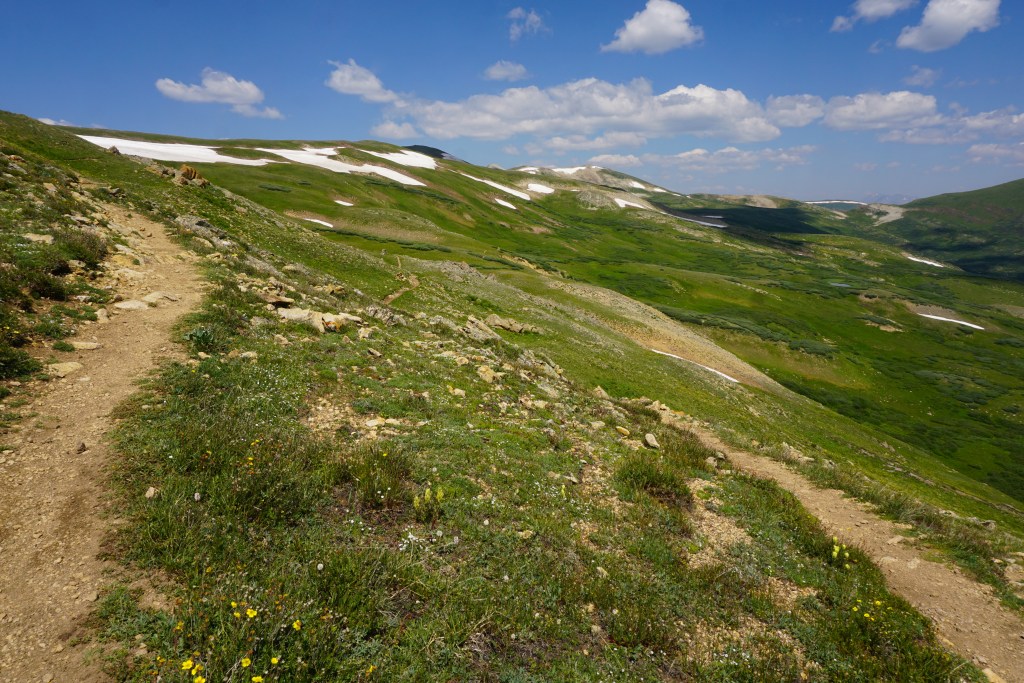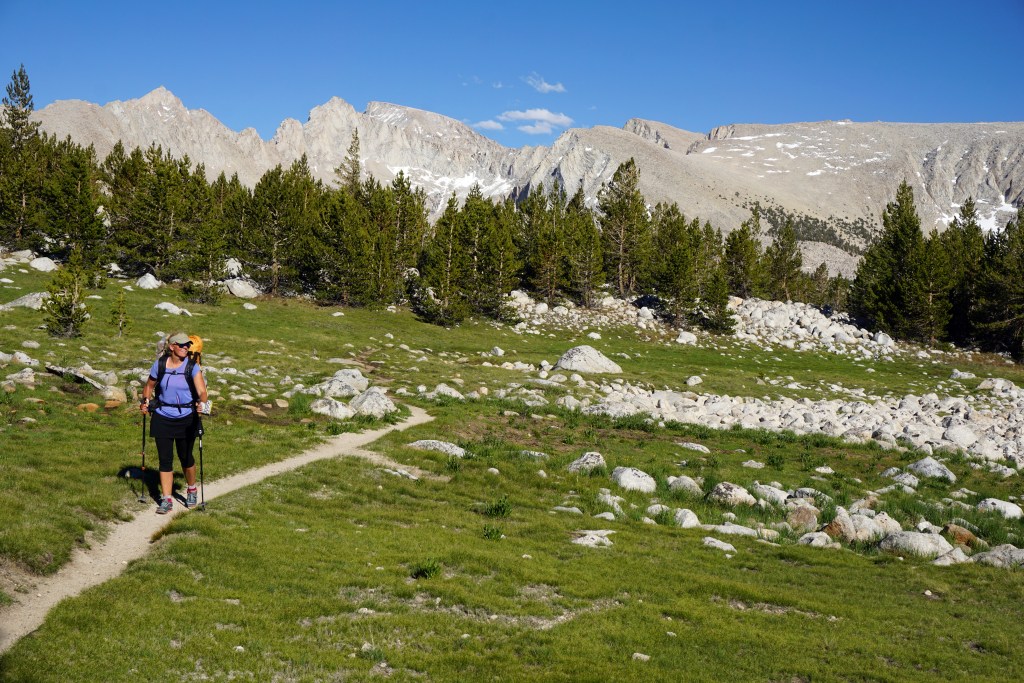Many backpackers dream of spending weeks—or even months—on trail; the proliferation of Instagram eye candy, along with popular books and films like Wild, A Walk in the Woods and Mile … Mile & a Half, only amplifies that desire. But most folks can’t swing the time commitment required to thru-hike classics like the Pacific Crest Trail, Appalachian Trail and Continental Divide Trail. The solution? Learn to embrace the joys of section hiking.
Hike Your Own Hike
Thru-hiking—completing an entire trail in one season—is often considered the gold standard for tackling long trails, but it’s not the only way to enjoy them. Instead, you can embody the spirit of the backpacking mantra, “hike your own hike,” by enjoying the trail in bite-size chunks. The advantages of this approach include cherry-picking the segments that most interest you, moving at your own pace (instead of, say, pushing miles to make it to Canada before the snow flies), avoiding crowds by traveling off-season and heading out when conditions are favorable (instead of, say, crossing the Mojave Desert in the heat of May).
Embarking on shorter trips can also make it a little easier to stay present and appreciate every moment on trail. It might be hard to believe, but when you’re out there for a long time, it’s easy to fall into a rhythm that sometimes transforms into what I call “scenery fatigue”—the experience of having your stoke replaced with a feeling that flirts with the edges of boredom.

Looking back at Searle Pass on the Colorado Trail.
Section Hiking Tips
In some respects, it might seem easier to wrestle all of your affairs in order, and then slip away for a few months instead of coordinating multiple section hikes. However, plotting out your adventures won’t feel so daunting if you keep a few things in mind:
Plan Ahead: Since most section hikers operate on a slim time frame, hashing out a detailed plan will help you feel organized and prepared before hitting the trail. Maps and guidebooks are fantastic tools, but online forums like WhiteBlaze.net, along with trail-specific Facebook groups also provide invaluable advice, opportunities to connect with other hikers and timely updates on conditions.
Coordinate Transportation: Sure, thru-hikers have to figure out how to get home at the end of a long trip, but section hikers have to do this over and over again. Coordinating transportation in advance of your trip can help eliminate these logistical concerns. To extend your mileage, search for public transportation options, local shuttle services, trail angels or friends who will help arrange a car shuttle. Be sure to research parking fees and restrictions near your entry and exit trailheads to avoid returning to find a ticket—or an empty spot where your car once stood.
Consider Resupply: The longer you spend on trail, the more crucial it is to restock food and other essential items. This will help lower your pack weight and keep hunger at bay. If you’re going to be out for a while, you may even need to replenish items like contact lenses, personal medication and paper maps. Options include mailing packages ahead to post offices and local businesses, asking a friend to meet you on trail, hiring a local packer to haul in supplies or shopping as you go along. If you’re mailing items ahead, check to see how long the post office or business will keep them; I found out the hard way on the Colorado Trail that some post offices will only hold packages for two weeks!
Set a Budget: It can be easy to lose track of finances no matter how long you’re out there; planning ahead for food, lodging and transportation costs will help alleviate anxiety about any missed income during your trip. Set up automatic payments for your bills, and prepay the next month’s rent if you’ll be gone for a while. Trust me, there’s nothing quite like receiving a voicemail from your house sitter explaining that there’s an eviction notice tacked to your front door!
Post-Trail Care: While plenty of resources cover how to plan a hike, there aren’t many that explore how to handle the time after a hike. Leaving a trail, especially if you’re traveling alongside thru-hikers who are continuing onward, can feel like losing a community. Stay in touch with your “trail family,” but also reconnect with your friends back home. Plan for another backpacking trip or find ways to get outside in your everyday life to help soften the sting.

Crossing Bighorn Plateau on the PCT.
Now … Hit the Trail!
Feeling inspired? Here are three section hikes on classic long trails to add to your bucket list.
Pacific Crest Trail (PCT): Onion Valley to South Lake
Distance: 64 miles
Best time to hike: July–September
Days on trail: 4–6
I love the Southern California desert, but if I have a week or so to spend on the Pacific Crest Trail, I’m heading straight for the dramatic beauty of the Sierra. In the spirit of full disclosure, this point-to-point route features two trailheads that aren’t actually on the PCT. However, that won’t matter a bit because both offer a gorgeous introduction to the peak-strewn, lake-dappled, meadow-carpeted high country that defines this segment of the trail, which coexists with the John Muir Trail for its majority. The bad news? This portion of the PCT is extremely popular, and permits are hard to come by. The good news? Several trailheads in the eastern Sierra offer access to the PCT, which means plenty of opportunities to extend or shorten your trip. Visit the Pacific Crest Trail Association website for more information.
Colorado Trail (CT): Collegiate Peaks Loop
Distance: 160 miles
Best time to hike: July–August
Days on trail: 12–16
Sample a taste of the Colorado Trail on this 160-mile loop that circles the Collegiate Peaks, a collection of picturesque 14ers along the Continental Divide. The original CT routing (Collegiate East) acts as a good warm-up as you wind through mixed forest in lower elevations; it also offers the opportunity for a more literal warmup at the Mount Princeton Hot Springs Resort just off trail. The Collegiate West segment (co-located with the Continental Divide Trail), which opened in 2012, jacks up the volume (and elevation gain) as you traverse above the treeline nearly the entire way to earn majestic alpine views. Opportunities for peak bagging abound in both sections, but be sure to time your climbs to finish before afternoon thunderstorms roll in. Cut the two-week journey in half by staging a car shuttle (Twin Lakes and Monarch Pass offer the most convenient trailheads) and hiking only one side of the loop. Visit the Colorado Trail Foundation website for more information.
Appalachian Trail (AT): Fontana Dam to Davenport Gap
Distance: 71 miles
Best time to hike: May–October
Days on trail: 5–7
Follow the Appalachian Trail’s famous white blazes as you straddle the line between Tennessee and North Carolina on this 71-mile trek through Great Smoky Mountains National Park. The rollercoaster path invokes the famous climbs and descents the trail is known for as it winds through a hazy forest thick with fragrant spruce and fir. You’ll earn expansive, 360-degree views above those trees if you pop up to the observation tower at Clingmans Dome (6,643 feet), which serves as the highest point in the park, in Tennessee and on the AT. Beware of red tape: You’ll need to snag a backcountry permit and use that application to select shelter spots in advance; camping is only allowed in designated spots. You’ll also need to arrange a car shuttle to ensure you’re not left stranded at the end of your trip. Short on time? Consider slicing the weeklong route in half by starting or ending at the car-accessible Newfound Gap in the middle of the park. Visit the Appalachian Trail Conservancy website for more information.
